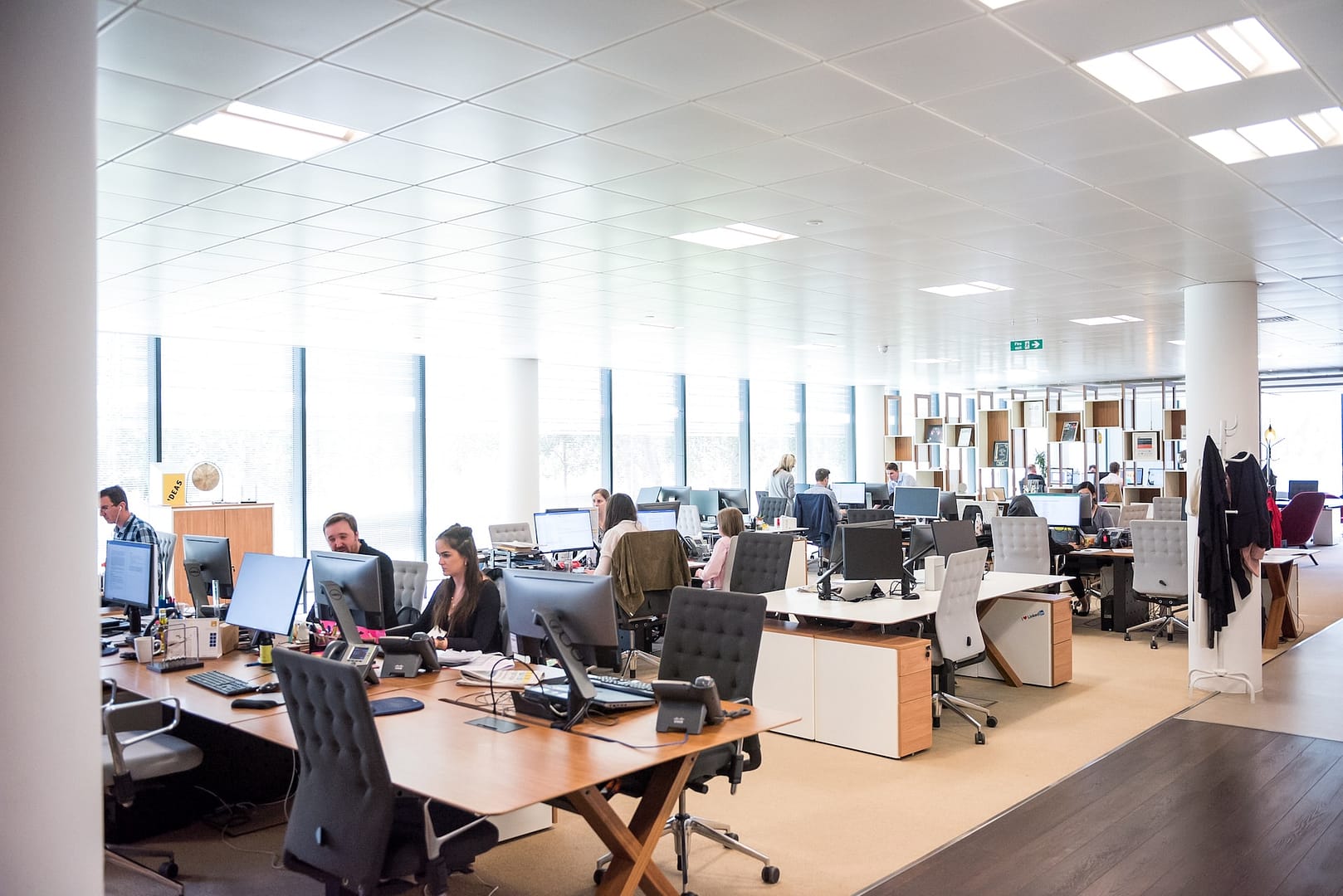In today’s fast-paced world, the pursuit of workplace efficiency and safety is more critical than ever. It’s a tandem that, when nurtured properly, not only ensures the well-being of employees but also enhances productivity and overall business success. Let’s delve into this crucial symbiosis, exploring how workplace safety affects efficiency and offering practical insights into performing work more efficiently and safely. We will also explain the best way to start your claim for your accident at work.
The Interplay of Workplace Efficiency and Safety
Workplace efficiency and safety are inseparable partners in the dance of productivity. Picture a bustling factory floor or a busy office environment. In such settings, even minor inefficiencies or safety lapses can lead to significant consequences, affecting both the employees and the bottom line.
A Not-So-Hypothetical Scenario
Consider a manufacturing plant where safety protocols are not rigorously followed. Workers might cut corners to save time, bypassing safety checks to meet production quotas. At first glance, this might seem like an efficient strategy, but it’s a risky game to play.
One day, in the rush to complete a critical order, an employee overlooks a vital safety procedure. A machine malfunctions, leading to a severe accident. Production comes to a grinding halt as emergency services are called in, investigations are conducted, and the injured employee receives medical attention. The financial and emotional toll on the company, the injured worker, and their colleagues is substantial.
In this scenario, the perceived efficiency gain in skipping safety measures resulted in a catastrophic setback. A well-organised workplace with stringent safety measures in place might have prevented the incident and maintained overall efficiency.
How Does Workplace Safety Affect Efficiency?
To comprehend the relationship between workplace safety and efficiency, it’s essential to examine the impact of safety on various facets of an organisation:
Employee Well-being
The most obvious link between safety and efficiency is the physical well-being of employees. When employees feel safe at work, they’re more likely to be focused, motivated, and productive. On the other hand, fear of accidents or hazardous conditions can lead to stress, distraction, and lower morale. Injured or ill employees may require extended time off, causing disruptions in work schedules and output.
Reduced Downtime
A safe workplace is one with fewer accidents and injuries. This directly translates into less downtime. When employees are not injured on the job, production can continue uninterrupted. This translates to cost savings, as downtime due to accidents can be financially crippling.
Improved Employee Retention
Companies that prioritise safety often have better employee retention rates. Workers are more likely to stay with a company that values their safety and well-being. This, in turn, reduces the costs associated with recruiting and training new employees, maintaining continuity, and preserving the company’s knowledge base.
Compliance and Legal Costs
Failing to maintain a safe workplace can lead to legal consequences and regulatory fines. Legal battles can be time-consuming and expensive. Ensuring workplace safety not only prevents accidents but also protects a company’s bottom line from legal woes.
Enhanced Productivity
A well-structured and safe work environment promotes efficiency. Employees can focus on their tasks without worrying about hazards or distractions. When safety protocols are in place, workers can work without unnecessary interruptions, leading to higher productivity levels.
Reputation and Customer Trust
Safety-conscious companies tend to have a better reputation in the market. Customers and clients are more likely to trust and do business with organisations that prioritise safety. A positive reputation can lead to increased business opportunities and long-term partnerships, further contributing to a company’s efficiency.
Lower Insurance Costs
Companies with a strong safety record often enjoy lower insurance premiums. Insurance companies reward safe practices with reduced rates, saving businesses money in the long run.
Performing Work More Efficiently and Safely
Now that we understand the crucial interplay between workplace efficiency and safety, let’s explore some practical strategies for performing work more efficiently and safely.
Employee Training
Begin by investing in thorough training programs for employees. Ensure that they understand safety protocols and are equipped to perform their tasks safely. Regular refresher courses can help keep safety measures top of mind.
Safety Audits
Conduct regular safety audits to identify potential hazards or inefficiencies in the workplace. These audits can help in proactive problem-solving, ensuring that safety measures are not just on paper but are also followed in practice.
Communication
Maintain open lines of communication between management and employees regarding safety concerns. Encourage employees to report potential hazards or inefficiencies without fear of reprisal. Regular safety meetings can facilitate such discussions.
Ergonomics
Consider the ergonomics of the workspace. Ensure that workstations are designed to minimise physical strain and discomfort for employees. Ergonomic improvements can lead to increased comfort and productivity.
Equipment Maintenance
Regularly inspect and maintain equipment to prevent breakdowns or accidents. A well-maintained machine is less likely to malfunction, causing costly delays and safety risks.
Safety Incentives
Consider implementing safety incentives or recognition programs to motivate employees to prioritise safety. Recognising and rewarding safe behaviour can lead to a culture of safety within the organisation.
Technology Integration
Leverage technology to enhance safety and efficiency. For example, the use of automation and sensors can help detect potential safety hazards and improve workflow processes.
Continuous Improvement
Finally, encourage a culture of continuous improvement. Involve employees in finding ways to streamline processes, reduce waste, and enhance safety. When employees feel empowered to make suggestions, they become more invested in the success of the organisation.
Making an Accident at Work Claim with National Claims
At National Claims, we understand that despite the best efforts to maintain workplace safety, accidents can still happen. In the unfortunate event that you or a loved one has been injured at work, we are here to guide you through the process of making a claim for compensation.
Seek Medical Attention
The first and most crucial step after a workplace accident is to seek immediate medical attention. Your health and well-being are of paramount importance. Documenting your injuries and receiving proper medical care will also provide essential evidence for your claim.
Report the Incident
Notify your employer or supervisor about the accident as soon as possible. This is not only a legal requirement in many cases but also helps establish a record of the incident. Make sure to provide accurate details of how the accident occurred and the nature of your injuries.
Gather Evidence
Collect evidence related to your workplace accident. This may include photographs of the accident scene, any faulty equipment involved, or any safety hazards that contributed to the incident. Eyewitness statements can also be valuable.
Contact National Claims
Reach out to National Claims to initiate your accident at work claim. Our experienced team of legal professionals specialises in workplace injury claims and will guide you through the process. We will help you understand your rights and work tirelessly to ensure you receive the compensation you deserve.
Document Expenses
Keep records of all expenses related to your injury, including medical bills, rehabilitation costs, and any lost wages due to time off work. This documentation will be crucial in determining the compensation you may be entitled to.

Conclusion
In the world of business, where time is money, workplace efficiency and safety go hand in hand. The story of workplace efficiency and safety is one of a symbiotic relationship, where prioritising one leads to benefits for the other. A safe workplace not only protects employees from harm but also fosters a culture of productivity and excellence.
By implementing strategies to enhance workplace safety and efficiency, organisations can create environments where employees thrive, costs are minimised, and reputations are bolstered. Remember, safety is not just a legal requirement; it’s a commitment to the well-being of your most valuable asset—your employees.
And in the unfortunate event of a workplace accident, National Claims stands ready to assist you in your journey to seek compensation and justice. Your well-being is our priority, and we are dedicated to helping you navigate the complexities of an accident at work claim. Together, we can ensure that your rights are protected, and you receive the support you need during a challenging time.
Contact us to start your claim and to speak to one of our claims specialists today to help you through the process.
Click below to see why we are one of the most trusted claims management companies in the UK.

We’re proud of our excellent customer reviews
We thrive on delivering exceptional service and ensuring our clients’ satisfaction. Don’t just take our word for it. Check out some of our independent reviews to see what our clients have to say.
Excellent

This firm is excellent, they sorted out my car pay out and injury claim very fast, they always communicate with you all the time.

My accident case was dealt with confidence and with great result of the outcome, especially James kept me informed all the time.

I was very impressed at the way my inquiry was treated. I was listened to attentively and everything I needed to know was explained to me.






